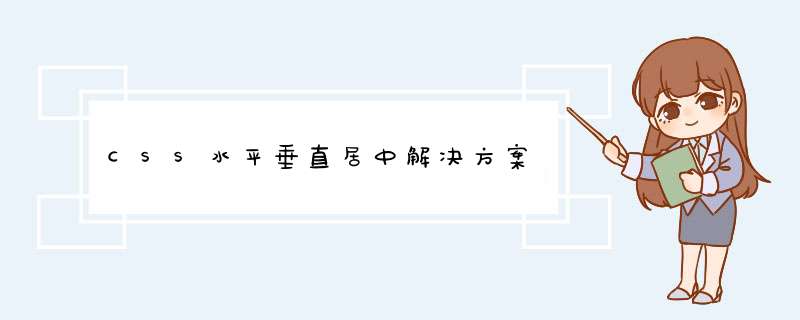
准备
创建元素
<div class="parent"> <div class="child">child</div> </div>
垂直水平居中方案一:知道宽度的情况下 absolute+margin负值
.parent {
width:400px;
height:400px;
background: red;
position: relative;
}
.child {
position: absolute;
left:50%;
top:50%;
background: yellow;
width:50px;
height:50px;
margin-left:-25px;
margin-top:-25px;
}
垂直水平居中方案二:不知道宽高的情况下 absolute+transform
.parent {
width:400px;
height:400px;
background: red;
position: relative;
}
.child {
position: absolute;
left:50%;
top:50%;
transform: translate(-50%,-50%);
}
垂直居中方案三:position+margin:auto
.parent {
position:relative;
width:200px;
height:200px;
background: red;
}
.child {
width:80px;
height:40px;
background: yellow;
position: absolute;
left:0;
top:0;
right:0 ;
bottom:0;
margin:auto;
}
垂直居中方案四:+ 多行文本的垂直居中 :table-cell+vertical-align:middle;
.parent {
height: 300px;
width:400px;
border: 1px solid red;
display: table-cell;
vertical-align: middle;
text-align: center;
}
.child {
display: inline-block;
width:50px;
height:50px;
background: blue;
}
/* 或者 */
.parent {
width: 400px;
height: 300px;
display: table-cell;
vertical-align: middle;
border: 1px solid red;
text-align: center;
}
.child {
display: inline-block;
vertical-align: middle;
background: blue;
}
垂直居中方案五:display: flex
.parent {
width:400px;
height:200px;
background:red;
display: flex;
justify-content:center;
align-items:center;
}
.child {
height:100px;
width:100px;
background:green;
}
垂直居中方案六:伪元素
.parent {
width:200px;
height:200px;
background:red;
text-align: center;
}
.child {
height:100px;
width:100px;
background:yellow;
display: inline-block;
vertical-align: middle;
}
.parent:before {
content:"";
height:100%;
vertical-align: middle;
display: inline-block;
}
以上就是本文的全部内容,希望对大家的学习有所帮助,也希望大家多多支持脚本之家。
欢迎分享,转载请注明来源:内存溢出

 微信扫一扫
微信扫一扫
 支付宝扫一扫
支付宝扫一扫
评论列表(0条)